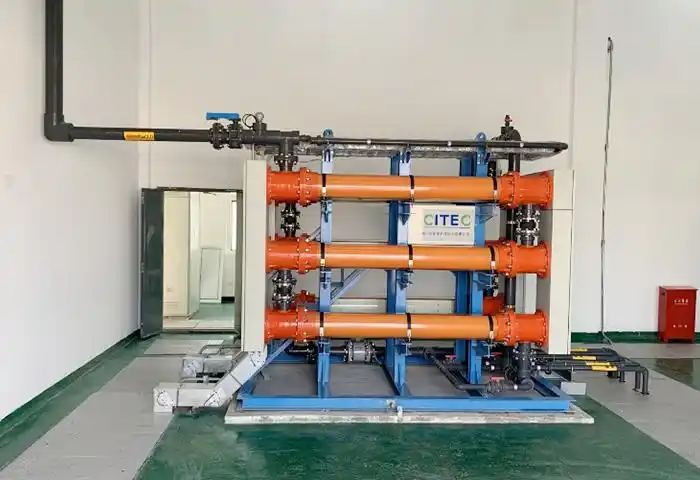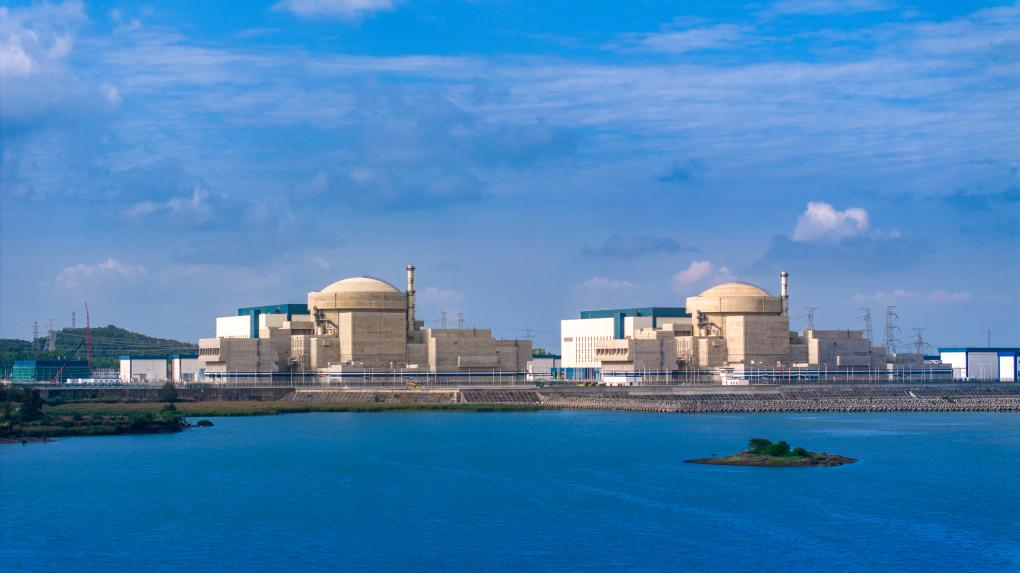In nuclear power generation systems, the circulating cooling water system is a key link to ensure the safe and stable operation of the unit. Taking a pressurized water reactor nuclear power plant as an example, its three-circuit circulating water system needs to process a huge amount of seawater (a single million-kilowatt unit requires more than 400,000 tons per hour), and the microorganisms, algae and marine larvae in the seawater are easy to adhere to the inner wall of the pipe, resulting in a decrease in heat exchange efficiency and even equipment blockage. The traditional chemical chlorination method has problems such as uneven mixing, high cost, and high safety risks. The electrolytic seawater sodium hypochlorite generator has become an important technical choice for nuclear power circulating water systems due to its high efficiency, environmental protection, and safety. Chlory's electrolytic seawater sodium hypochlorite generator has been recognized by the industry in practical applications.

Technical principle and equipment composition
The core principle of the electrolytic seawater sodium hypochlorite generator is to convert sodium chloride in seawater into sodium hypochlorite (NaClO) through an electrochemical process. The main process is as follows:
Seawater pretreatment: Seawater is filtered through an automatic cleaning filter to remove large particles of impurities, and then separated by a sand remover to ensure that the water entering the electrolytic cell is clean.
Electrolysis reaction: Under the action of a DC electric field, chloride ions (Cl⁻) in seawater are oxidized to chlorine (Cl₂) at the anode, and water molecules are reduced to hydrogen (H₂) and hydroxide ions (OH⁻) at the cathode. Chlorine and hydroxide ions further react to form sodium hypochlorite and sodium chloride.
Gas-liquid separation and storage: The generated sodium hypochlorite solution and the byproduct hydrogen are processed through a two-stage gas-liquid separation device to ensure that the hydrogen concentration is lower than the safety threshold (usually <1%) to avoid the risk of explosion.
Dosing and control: The sodium hypochlorite solution is transported to the circulating water system through a metering pump, and the dosage is adjusted in real time in combination with online monitoring to ensure the sterilization effect.

Equipment design focuses on reliability and durability: the electrolyzer uses titanium-based electrode materials coated with ruthenium dioxide, which has strong corrosion resistance and a service life of more than 5 years; the modular structure integrates power supply, control system and drug storage unit to reduce floor space and fault points.
Core application scenarios in nuclear power plants
The three-circuit circulating water of the circulating water system for sterilization and algae removal is in direct contact with seawater, which is easy to breed biofilm. Sodium hypochlorite, as a strong oxidant, can destroy the cell membrane structure of microorganisms, effectively inhibit algae reproduction and biological slime formation, and ensure the heat exchange efficiency of the condenser.
Emergency guarantee and water quality stability Under extreme conditions such as power outage (SBO) of the whole plant, the generator can be started quickly to ensure continuous disinfection of cooling water and avoid the expansion of accidents. Its raw materials only rely on seawater and electricity, and no external chemical supply is required, which enhances the independence of the system.
Balance between environmental protection and economy Compared with traditional liquid chlorine transportation, on-site chlorine production by electrolysis avoids storage and transportation risks, and has low raw material costs (only seawater and electricity are consumed). Taking a 1 million kilowatt unit as an example, the annual operating cost can be reduced by more than 30%.
Typical cases and technical advantages
Domestic application: The electrolysis of seawater chlorine production system provided by Qingdao Shuangrui Company for the No. 5 and No. 6 units of Fuqing Nuclear Power Plant has achieved a marine biological inhibition rate of more than 90% by optimizing electrode design and automatic control, ensuring the stable operation of the "Hualong One" unit.
International case: Brazil's Angra Nuclear Power Plant uses similar technology to produce sodium hypochlorite and 100 tons of hydrogen by-product every year through electrolysis of seawater. In the future, it may expand the use of hydrogen energy.

Technical advantages include:
High safety: There is no risk of chlorine leakage, and hydrogen is discharged through forced dilution, which meets the strict safety standards of nuclear power.
Strong adaptability: It can handle seawater of different salinities, and the anti-scaling design of the electrode (such as increasing flow rate and automatic acid washing) ensures long-term stable operation.
Intelligent control: The PLC system combines the Internet of Things technology to support remote monitoring and fault warning, reducing operation and maintenance costs.
Challenges and future development
Although the electrolytic seawater sodium hypochlorite generator has been widely used, it still faces challenges:
Electrode scaling: Calcium and magnesium ions in seawater are easily deposited on the cathode, requiring regular acid washing and maintenance. In the future, new anti-scaling coating materials can be explored.
Hydrogen energy utilization: Byproduct hydrogen is currently mostly discharged directly, and safe and efficient capture technology needs to be studied to help nuclear power green hydrogen production.
Energy efficiency improvement: Optimize the electrolyzer structure and power efficiency to further reduce the unit chlorine production energy consumption.
In the future, with the growth of nuclear power installed capacity and the advancement of the "dual carbon" goal, this technology will be upgraded in the direction of intelligence and low carbonization. For example, combined with a digital operation and maintenance platform to achieve precise dosing, or coordinated development with nuclear energy hydrogen production technology, forming a "nuclear power-seawater treatment-hydrogen energy" industry chain closed loop.

The electrolytic seawater sodium hypochlorite generator has become a standard equipment for nuclear power circulating water systems due to its technical advantages. Its value in ensuring unit safety, reducing operation and maintenance costs, and promoting green power generation will be further highlighted with the continuous development of the nuclear power industry. Chlory has been committed to the production and research and development of sodium hypochlorite for electrolysis of seawater. In the future, through technological innovation and scenario expansion, this equipment is expected to play a more important role in the field of comprehensive utilization of nuclear energy.
